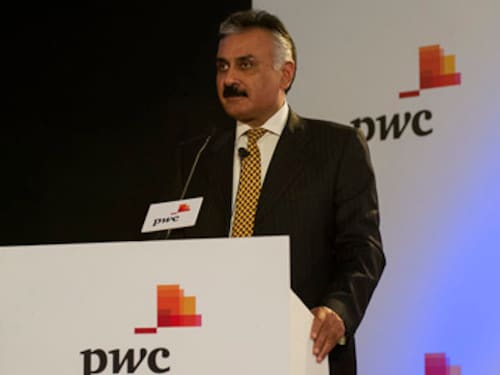PwC's mantra for 9% Growth for India
PwC met more than 80 business leaders both in India and abroad, across sectors, to formulate the strategies that can help India boost its growth to an aspirational target of 9 per cent


PricewaterhouseCoopers (PwC) India today released a report offering solutions required to grow India’s GDP by 9 per cent per annum and become a US$10 trillion economy by 2034.
The report presents three possible economic growth scenarios for India each depending on different strategies for corporates, entrepreneurs and Government and each reflecting a different focus for investment. The first scenario talks of a 6.6 per cent annual growth in GDP, the second predicts a 7 per cent growth and the most aggressive scenario is a 9 per cent growth.
PwC began work on this report six months ago, met more than 80 business leaders both in India and abroad, across sectors to understand the strategies that can help India boost its growth from the current five per cent per annum to an aspirational target of 9 per cent. The report studied ten sectors: education, healthcare, agriculture, retail, power, manufacturing, financial services, urbanisation and India’s digital and physical connectivity. Together, these sectors constitute over 70 per cent of India’s GDP. “Our research shows that for India to achieve a 9 per cent growth per annum, substantial and enduring reforms need to be undertaken,” said Deepak Kapoor, Chairman, PwC India at a press conference held in New Delhi to release the report. “We also found that each of the sectors are confronted by challenges that test our capabilities and stretch our limited resources. The sectors need solutions that are resource efficient and environmentally sustainable to help us reach our target of 9 per cent.”
Kapoor said the government has a key role to play by creating national platforms that enable this growth and improving the ease of doing business index. “For instance, immediate changes that could be done are in areas such as ease in starting a company and in paying taxes,” he said.
Dennis Nally, Chairman, PricewaterhouseCoopers International Ltd, said it was now or never for India to reach the 9 per cent GDP growth rate. “A young demographic paired with a burgeoning middle-class that is digitally enabled is a once in a lifetime opportunity for India to develop economically and socially” he said. “It is the youth that will power India’s growth both in the short term and in the long term.”
Nally added that international investors will play a key role in helping India reach the aspirational target of 9 per cent growth. “India needs to increase foreign investment in India every year by six fold in dollar terms. While India has a high savings rate, this cannot increase without foreign investment.”
Nally also called for an improved business environment. “Our report suggests a series of administrative and structural changes such as procedural simplification which we believe can benefit and improve India’s international ranking, address concerns of international investors and turbo charge FDI that is required in India.”